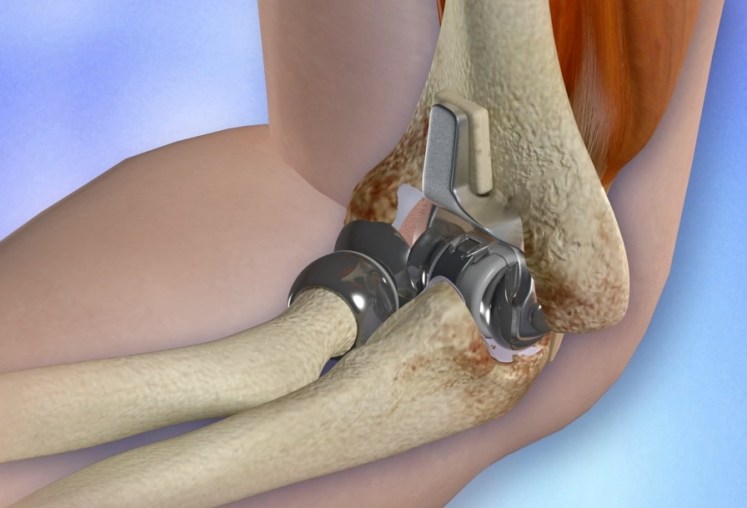Restoring Function and Relieving Pain
What Is Elbow Replacement Surgery?
Elbow replacement surgery, also known as total elbow arthroplasty, is a procedure designed to relieve pain and restore movement in a damaged or deteriorated elbow joint. The procedure involves replacing the damaged joint surfaces with a prosthetic implant, allowing for smoother movement and improved function. This surgery is often recommended for individuals suffering from arthritis, severe fractures, or conditions that limit mobility and daily activities.
Elbow replacement is typically considered when non-surgical treatments such as medication, physiotherapy, and lifestyle modifications no longer provide sufficient relief from pain and stiffness.
Who Can Benefit from Elbow Replacement Surgery?
Elbow replacement may be suitable for individuals who:
- Experience persistent elbow pain that affects daily activities, such as lifting, reaching, or gripping objects.
- Have been diagnosed with rheumatoid arthritis, osteoarthritis, or post-traumatic arthritis in the elbow joint.
- Suffer from a severe elbow fracture that cannot be effectively treated with other surgical methods.
- Have not found relief from non-surgical treatments such as physiotherapy or corticosteroid injections.
Common Concerns About Elbow Replacement Surgery
Is Elbow Replacement Safe?
Yes. Elbow replacement is a well-established procedure with a strong success rate. Advances in surgical techniques and implant materials have improved both the safety and long-term effectiveness of the procedure.
How Long Does Recovery Take?
Recovery varies depending on the patient’s overall health and the complexity of the surgery but generally includes:
- Hospital Stay – Most patients remain in the hospital for 1-3 days following surgery.
- Early Rehabilitation – Gentle movements begin shortly after surgery to prevent stiffness and aid healing.
- Physiotherapy & Strengthening – Structured physiotherapy helps restore strength, flexibility, and function over several weeks.
- Full Recovery – Most patients experience significant improvement within 3-6 months, though full healing may take up to a year.
Will There Be Pain After Surgery?
Some discomfort is expected in the initial recovery period, but effective pain management, including medications and guided rehabilitation, helps to minimise pain and ensure a smooth recovery.
What Are the Risks?
As with any surgical procedure, elbow replacement carries some risks, including infection, implant wear, nerve injury, and joint stiffness. However, with proper post-surgical care, physiotherapy, and regular follow-ups, these risks are significantly reduced.
How Does Elbow Replacement Surgery Work?
- Pre-Surgical Assessment – A thorough evaluation, including imaging tests, is conducted to determine the extent of elbow joint damage.
- Anaesthesia & Incision – The procedure is performed under anaesthesia, and an incision is made to access the elbow joint.
- Damaged Tissue Removal – Worn-out cartilage and damaged bone are carefully removed.
- Implant Placement – A prosthetic elbow joint, made from durable metal and plastic materials, is securely positioned.
- Wound Closure & Recovery – The incision is closed, and the patient begins rehabilitation to restore movement and prevent stiffness.
Why Choose Advanced Orthopaedics for Elbow Replacement?
Skilled Surgical Team
Led by Dr Sarbjit Singh, a Senior Consultant Orthopaedic Surgeon, our clinic provides a structured and personalised approach to elbow replacement, ensuring safe and effective treatment.
High-Quality Prosthetic Implants
We use durable and anatomically designed elbow implants that allow for smooth and natural movement, improving long-term functionality.
Comprehensive Post-Surgical Support
Our post-operative care includes structured physiotherapy, personalised rehabilitation programs, and regular follow-ups to optimise recovery and ensure the best possible outcome.
Take the Next Step
If you are considering elbow replacement surgery, our team at Advanced Orthopaedics is here to help. Schedule a consultation today to discuss your treatment options and take the first step towards pain-free movement and improved quality of life.





